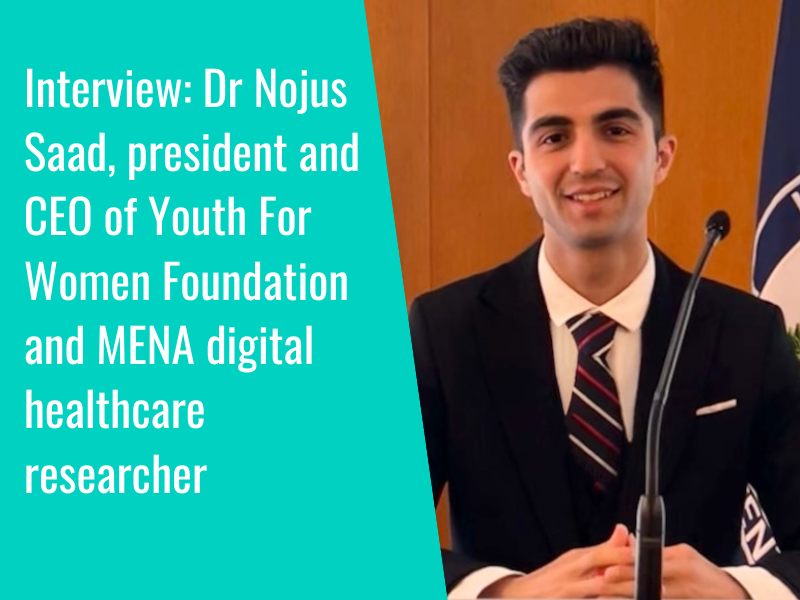Here, we take a look at the current status of digital health in Kenya, exploring topics including electronic health records, recent digital initiatives, telemedicine and more.
The Digital Health Bill 2023
The Kenyan Ministry of Health (MoH) shares regular news updates on activities and initiatives across the country. One of the latest major updates to be released has been around the publication of the Digital Health Bill 2023, which focuses on a number of different areas including establishing a comprehensive integrated health information system, putting in place a data governance framework, and e-health service delivery.
The Bill highlights the establishment of a Digital Health Agency designed to work on activities including developing and maintaining the health information system and the infrastructure required; establishing registries “at appropriate level to create a single source of truth”; and promoting adoption of “best practice and standards for digital health that facilitate data exchange”. Other activities include ensuring health data portability, supporting the development of standards for interoperability, and collaborating with counties and “other statutory authorities” to maintain the technological infrastructure “necessary for the core digital health services”.
The current digital health landscape
The Kenyan Ministry of Health published the Kenya Health Facility Census in September 2023, which collected information from 14,366 health facilities and highlighted that “most (69 percent) of the facilities did not have an electronic health information system but where present, the system was mostly integrated across the various departments in the health facility”.
The Kenya Health Management Information Systems (KeHMIS) project, implemented by Palladium and funded by PEPFAR through the Centers for Disease Control and Prevention in the United States, has been underway since 2011. It aims to ensure that HIV data collection paper records are digitised, scaling up EMR sites and data availability, and improving HIS “towards the delivery of patient-centred care and improve data demand and use for individual-level data”.
In another national development, the launch of the Kenyan government’s electronic community health information system (eCHIS) in October 2023, and the subsequent roll-out of an eCHIS mobile app to 100,000 community health workers across the country, is intended to help progress the nation’s aim of achieving universal health coverage. Cabinet Secretary for Health, Nakhumicha S. Wafula, also spoke of the Ministry’s work with Safaricom to “equip every Community Health Promoter with a smartphone integrated with the electronic Community Health Information System”.
Various initiatives are underway to support the use of telemedicine in Kenya to improve access to healthcare, including Daktari Smart, a program launched in 2021 to support the delivery of healthcare to children in rural locations, and help resolve challenges including long waiting times to see specialists, poor health outcomes, and a “lack of timely quality care”.
Using a kit comprised of electronic medical devices including an electronic stethoscope, vital signs monitor and ultrasound machine, Daktari Smart enables health workers to send data to specialists, who can view it in real time, helping to overcome a lack of specialists and paediatricians in many rural areas of Kenya.
Hospitals
Let’s take a look at digital and data from some of Kenya’s hospitals.
In spring 2023, The Nairobi Hospital was awarded a grant from the U.S. Trade and Development Agency (USTDA) for a feasibility study focusing on improving access and health services in Kenya, forming part of the hospital’s wider plans to establish five medical centres and digitise its operations. James Nyamongo, CEO of The Nairobi Hospital, spoke of the collaboration as a “significant step” in promoting innovation to tackle “emergent health issues in the region”.
The Aga Khan University Hospital in Nairobi announced in October that it had implemented a new electronic health records system “aimed at enhancing the delivery of care and facilitating research”, forming part of the organisation’s wider digitisation project which will see its seven hospitals and 340 medical centres go “fully paperless”. Through the new system, patients can access their health records, view test results, manage appointments, and ask questions.
The Nairobi West Hospital took to LinkedIn earlier this year to announce that it had performed “the country’s first-ever digital AI-enabled PET (positron emission tomography) scan”, using new AI technology to improve the “precision and efficiency” of cancer diagnoses.
Priorities and key areas of focus
In October 2023, ICT and digital economy cabinet secretary, Eliud Owalo, highlighted several important developments toward the integration of digital solutions in the Kenyan healthcare sector, including the rolling-out of fibre infrastructure to connect “over 100,000 health facilities and 1,450 digital village hubs, enhancing digital skills across the nation”, and the digitising of health records.
In February, the Kenyan government launched a Kshs three billion stipend payment programme for Community Health Promoters, celebrating their “vital role in advancing primary health care under the Bottom-up Economic Transformation Agenda. 3,000 CHPs in Kiambu County are undergoing training on the usage of Electronic Community Health Information System, to help boost communication and “more coordinated care”.
At the AmCham Business Summit in Nairobi in April, the Cabinet Secretary for Health talked about the “critical role” of improving access to primary care in helping meet the goal of universal health coverage (UHC) in the country, with one of five pillars of the UHC roadmap focusing on the development of integrated health information systems.
Also in April, talks between Harry Kimtai, the principal secretary for the State Department for Medical Services in Kenya, and members of leadership from Hemas Hospitals in Sri Lanka covered the potential for a collaboration between the two nations, “leveraging digital networks for efficient data management and healthcare delivery”.
Research
A study published in the East African Journal of Health and Science looked at the uptake of electronic medical record systems amongst health workers in public hospitals in Kiambu County, Kenya.
Collecting data from health professionals in the county through a questionnaire, the study’s authors highlighted that 88 percent of respondents were currently using EMRs, with 68.7 percent having used them for a period of 1-4 years; and 24.4 percent having used them for 5-9 years.
Concluding that EMRs are “widely used” in Kiambu County’s public hospitals, authors found that factors associated with uptake included “speed in retrieving patient’s information”, ease of use, and “directives from superiors”.
Factors considered to limit uptake included “unstable internet/network system”, power outages, lack of training, lack of ICT skills, “costliness”, lack of equipment, lack of confidence with ICT, “lack of confidentiality and interoperability”, a slow pace of work, and “creation of duplicity”.
Recommendations put forward by the authors are that “the government should harness adequacy of ICT resources that includes efficient network system within public hospitals in the county”, that healthcare workers need to be trained specifically on the use of EMRs “by integrating HMIS module in the training of all cadres of health”, and “the health sector should leverage highly educated professionals as evidenced in the socio-economic background of respondents to relax the constraints impeding e-Health use and adoption”.
Citation: Ndemi, C. K., Otieno, G. O. & Rucha, K. (2023). Uptake of Electronic Medical Record System by Health Workers in Selected Public Hospitals in Kiambu County, Kenya East African Journal of Health and Science, 6(2), 105-115. https://doi.org/10.37284/eajhs.6.2.1657.
A separate study published in the BMC Medical Informatics and Decision Making journal looked at the use of EMRs for HIV testing, care, and treatment programming in Kenya, focusing on the “evolution” of EMRs and the development of a centralised national data warehouse (NDW).
Authors highlighted the increase in the number of health facilities uploading individual-level data to the NDW, from 666 in 2016, to 1,516 in 2020, “covering 41 of 47 counties in Kenya”. By the end of 2020, authors describe how the NDW “hosted longitudinal data from 1,928,458 individuals ever started on antiretroviral therapy.”
Looking at the potential of the NDW in HIV monitoring and surveillance in Kenya, authors conclude that its “longitudinal design” and “ability to respond to public health priorities in real-time”, makes it “a unique and complementary resource for HIV programme monitoring and surveillance with potential to strengthen timely data driven decision-making towards HIV epidemic control in Kenya”.
Citation: Ndisha, M., Hassan, A.S., Ngari, F. et al. Leveraging electronic medical records for HIV testing, care, and treatment programming in Kenya—the national data warehouse project. BMC Med Inform Decis Mak 23, 183 (2023). https://doi.org/10.1186/s12911-023-02265-6
Earlier this month, we looked at the current status of health tech in India, covering electronic health records, telemedicine, remote care and more.
- 1
- 2














